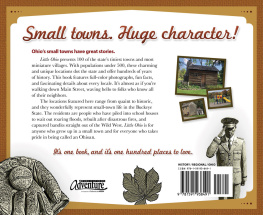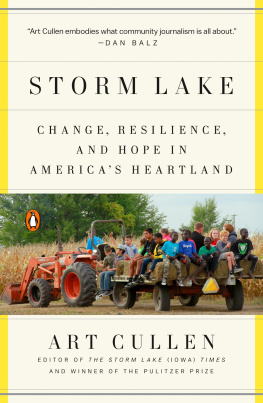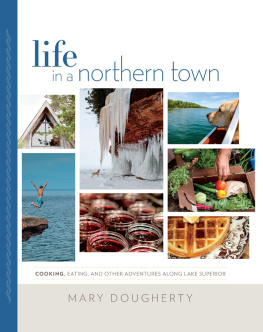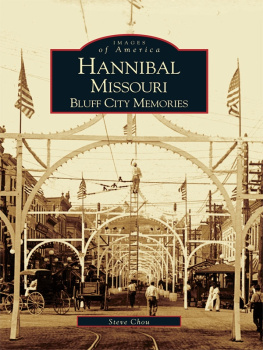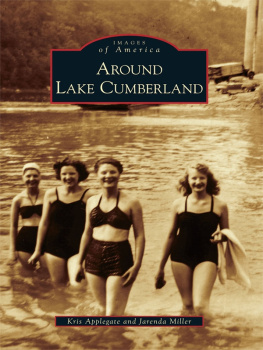Published by The History Press
Charleston, SC
www.historypress.net
Copyright 2017 by John Schreier
All rights reserved
First published 2017
e-book edition 2017
ISBN 978.1.62585.719.4
Library of Congress Control Number: 2016950687
print edition ISBN 978.1.46711.858.3
Notice: The information in this book is true and complete to the best of our knowledge. It is offered without guarantee on the part of the author or The History Press. The author and The History Press disclaim all liability in connection with the use of this book.
All rights reserved. No part of this book may be reproduced or transmitted in any form whatsoever without prior written permission from the publisher except in the case of brief quotations embodied in critical articles and reviews.
ACKNOWLEDGEMENTS
First and foremost, my wonderful family helped push me while cheering me through the process of writing a book. Whether it was supporting me through the countless hours researching at the Council Bluffs Public Library, the work done while on a family vacation to the beach, or always supporting me through the process, I cant thank you enough.
As a newspaper editor, I had more access to our materials than any other. From the documents, I owe a debt of gratitude to my co-workers whose work I cited: Mike Brownlee, Kyle Bruggeman, Ashlee Coffey, Dennis Friend, Kirby Kaufman, Jon Leu, Chad Nation, Tim Rohwer and Joe Shearerthose who work alongside me and the forerunners at the Daily Nonpareil whom I never met but relied on. Their first draft of history helped tell this first draft of Carter Lakes story.
This book would not have happened without the two editors with whom I workedbut have never met. Greg Dumais saw the potential in a distant newspaper in far-flung Iowa when he stumbled onto my 2012 article on Carter Lakes confusing, colorful history. He advocated for the books publication when it appeared to be in doubt. Ed Mack helped provide me the direction and stylistic points needed to ready this labor to become a reality.
Finally, the local historical community deserves much credit for this book. Ben Johnson at the Council Bluffs Public Library set aside documents out of the special collections and an advance preview of digitized archives. Adam Fletcher Sasse, a historian whose research covers the opposite side of Omaha from where I grew up, was ready to share research with someone with whom hed never corresponded in person. Dick Warner and Jon Barnes of the Historical Society of Pottawattamie County both provided me reference material nearly on command when I asked to pick their brains.
There are many other family members, friends and colleagues whose contributions to this book were not direct but helped push me toward completing it. For any of you whom Ive missed, thank you.
Introduction
A GEOGRAPHICAL ODDITY
Unless you have a boat, the only way to reach the city of Carter Lake, Iowa, from elsewhere in the state is to travel through Nebraska.
This little peninsula often confuses travelers to Omahas Eppley Airfield, located just a few blocks from the city limits and state lines. Those heading into downtown Omaha on Abbott Drive encounter a large Welcome to Iowa! sign as the road briefly becomes Iowa Highway 165, the shortest state route in Iowa at a half mile in length, before once again reverting to a Nebraska street.
The simple question is asked by many residents of both states: Why is Carter Lake in Iowa? The short and truthful answer is that the city has always been in the Hawkeye State. The reality, however, is far from that straightforward.
Iowa and Nebraska repeatedly battled for the city bordered by the new oxbow lake that resulted when the Missouri River changed its course in 1877. But to the stranded Iowa community on the west, or Nebraska, side of the river, neither Council Bluffs nor Omaha wanted Carter Lake for anything more than its tax revenue for decades.
Residents of Carter Lake pleaded with leaders of both cities, yet neither extended utilities and services into what was a literal and figurative island in the middle of everything. The area was once called Cut-Off Islanda fitting name for a place torn between two cities and two states yet connected to neither. The Omaha World-Herald once described the community in its earliest days as a forlorn little settlement called Carter Lake, cut off from its own state of Iowa by the rushing river, ignored as a foreign settlement by its Nebraska neighbors.
Cars zip from Nebraska to Iowa on Abbott Drive, which becomes Iowa Highway 165 at the point shown beneath the Omaha skyline. Author photo.
Finally, in 1930, Carter Lake was incorporated as a city in the state of Iowa, a status it has retained ever since. The city has enjoyed a colorful, confusing history both before and after its incorporation. Carter Lakes search for identity resulted in several high-level legal disputes; the city fought for the ability to secede from Council Bluffs in the state supreme court, was the subject of at least two U.S. Supreme Court rulings and heavily influenced a third. To nearby residents, the town served as everything from a family-friendly amusement park to one of the Midwests largest illegal gambling hot spots.
Today, Carter Lake remains firmly located in Iowa, but it continues to contribute to the principal cities on both sides of the state line. The citys students, for instance, attend Carter Lake Elementary School, which is a part of the Council Bluffs Community School District. A handful of homeowners backing up to the lake pay property taxes to both Iowa and Nebraska, as the state line cuts through a portion of their backyards.
Yet, amazingly little has been published about Carter Lakes history. Beyond an Omaha college students dissertation submitted in 1960, I found no other works despite an exhaustive search across Iowa and Nebraska libraries when I first began writing this book. Little exists in the archives of both local and state historical preservation groups. Much of the source material came from contemporaneous newspaper reporting over the decades. In nearly every case, this first draft of history has been the most recent since the day it was printedand the variety of sources led to occasional discrepancies on dates and players, which have been noted throughout. A handful of historical books about Omaha and/or Council Bluffs contain snippets about the town, but despite being considered a part of both at points in its history, Carter Lake has been firmly entrenched as over there by both cities.
Carter Lake Elementary School first-graders Mason Cortez Trujillo (front left) and Joella Wingate (front right) practice identifying beats during a patron tour on March 19, 2015. The Daily Nonpareil/Joe Shearer.
Newspaper accounts over the years lean heavily on the phrase over there to describe its location. Carter Lake is often seen today as nothing more than a geographic outlierone of many small pieces of land tossed back and forth between Iowa and Nebraska by the Missouri Rivers fickle flow over the years. But that status fails to do justice to the tug of war that birthed Carter Lake from floodwaters and continues to shape its history to this day.



